
The Essential Mum Planting Guide: Growing, Planting & Caring
Published: 01/12/2022 | Updated: 14/04/2023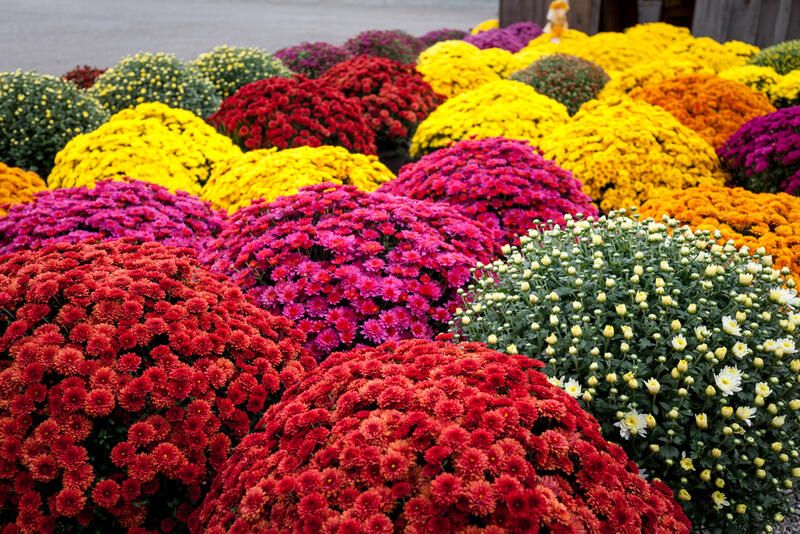
There are a few fall staples, from pumpkin patches to special lattes. Fall is a season that always felt like a warm hug. Not named fall without reason, every garden tends to suffer a bit with drab colors making their way in. What if we told you there is a vibrant, gorgeous garden mums bloom you could be planting especially for this time of year?


One of the most representative quintessential flowers of fall is the chrysanthemum, also known as the "mum." They often bloom the last before the first or hard frost, sending your garden into the deep sleep of winter with a final splash of color.
Mums reach their peak in the late summer when other plants start to wither. They require a particular amount of light to signal when it is time to start putting on a show since, like poinsettias, they are photoperiodic.
Here is your quintessential guide on all things growing, caring, and planting for your quintessential fall flowers.
General Information on Garden Mums
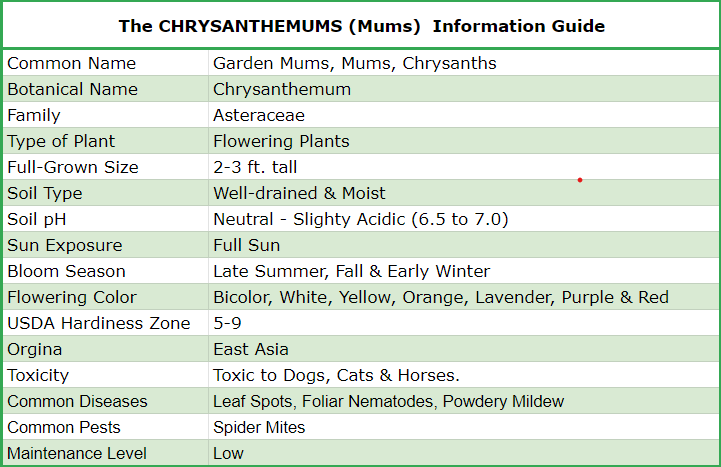
Chrysanthemums 101: The Classic Fall Flower
Chrysanthemums are historic flowers that have been grown in China since the fifteenth century. Flowers can range in size from a quarter to a dinner plate. Depending on the type, they bloom in a variety of shapes. Mums can be mounded flowers with long petals in the form of quills or tubes, or flat flowers with a single or double layer of petals that resemble daisies.
The difference between florist mums and garden mums is how hardy they are. Mums in the garden are hardy perennials that you put outside where they can survive all year. If you plant florist mums in your Midwest yard, they won't survive the winter because they are utilized as indoor potted plants. Make sure you are purchasing a suitable mum for your needs. Want to beautify your home for Thanksgiving guests with a flowering plant? In the grocery store's floral department, purchase the foil-wrapped pot of chrysanthemums. Want a mum plant in your yard that will last for years? Visit a nursery or garden center to purchase a mother that is suitable for the outdoors.

Types of Mums
The National Chrysanthemum Society has established a categorization system to divide 13 different mums by bloom shape, with over 100 different chrysanthemum cultivars in the United States. Here are some of the most popular categories:
Decorative
Flowers are arranged by florists using fancy class mums. Given that the florets gradually develop longer from the center out, the 5-inch and larger blooms appear flat. Some of the best variants are Fireflash, Coral Charm, and Honeyglow.
Thistle
The bush bloom, also known as the thistle bloom, frequently has multicolored blossoms. The twisted, long, thin florets climb upward or slant downward toward the stem. The blossoms of thistles have an exotic, distinctive appearance. Among the most common types are Cindy, Cisco, and Orange Spray.
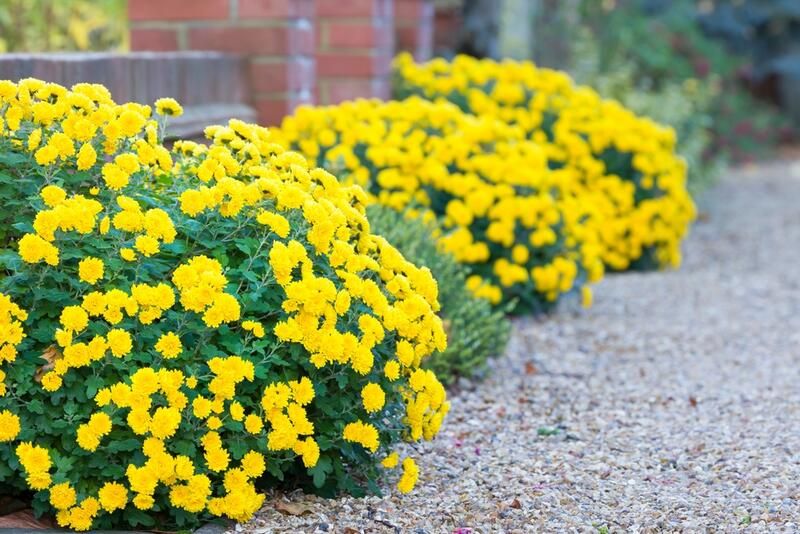
Spider Mum
The distinctive feature of spider mums is their tall, spiky florets, which can be one color or several. The tubular florets are flexible and resemble spider legs. A focal bloom in your garden is created by its delicate and exotic appearance. Evening Glow, Symphony, and Western Voodoo are popular types.
Single and Semi-Double
These daisy-like flowers have a compact core surrounded by one or two rounds of ray florets. They are perfect for borders and tiny spaces because their total plant size ranges from 1 to 3 feet. Rage, Icy Island, and Crimson Glory are popular variants.
Anemone
These daisy-like blooms have long, tubular florets grouped close together in the center, which resembles a button. They produce a single or multicolored, 4-inch flower. Among the most popular types are Dorothy Mechum, Purple Light, and Angel.
How to Plant Mums
You're probably wondering how to plant mums, so they fill your landscape quickly and lusciously. Let's get into some of the must-know basics:
When to Plant Mums
Despite being fundamentally perennial plants, mums are planted as annuals. If you reside in an area with chilly winters (USDA Plant Hardiness Zones 3 through 6), choose early-blooming varieties; they will be hardier the following year. If you reside south of Zone 6, you can push the boundaries by selecting cultivars that take more time to mature. As winter comes, cover plants with mulch made of interlaced evergreen boughs to protect them from the chilly weather.
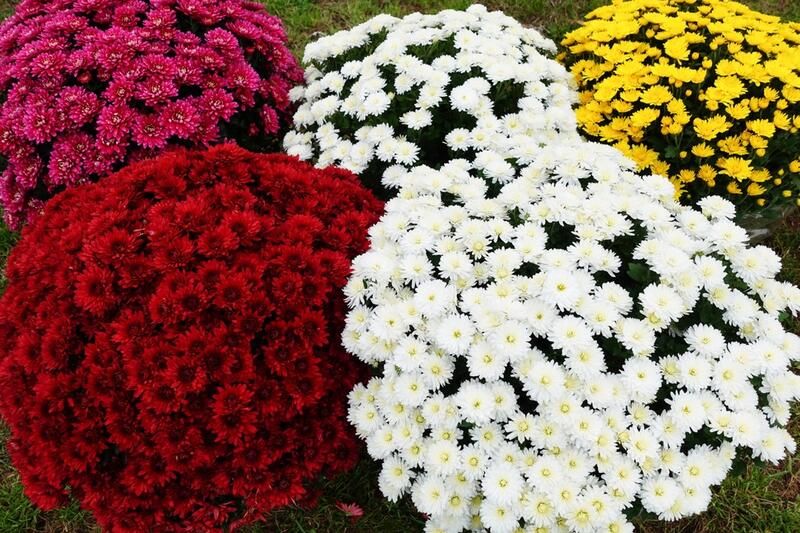
Hardy Mums
There's a good reason why chrysanthemums sold in garden centers are typically referred to as "hardy mums." In Zones 5 through 9, the majority of mum types can withstand the winter. Some kinds, including Mammoth Daisies, can withstand cold weather down to Zone 3. Check the label when buying mums to be sure you're buying hardy garden kinds suitable for your planting zone. Locally specific types are frequently offered in local nurseries and garden centers. Avoid buying from flower stores since the mums they sell are different, less resilient floral kinds.
Soil Types for Mums
Chrysanthemums can survive in most soil types, although they do best in moist, well-draining soil. Mums cannot develop strong roots in hard, dry soil, and they drown in damp, marshy soil when grown in these conditions. The key is to find a midway ground. If you've previously planted perennials, you are already familiar with how to plant chrysanthemums. Work your soil to a depth of 8 to 12 inches to make nice soil for your mums. Add 2 to 4 inches of compost or peat moss or other organic material. Squeezing a handful of dirt can be used to determine the ideal texture. The soil shouldn't clump together or disintegrate rapidly when you open your palm. It should just fall apart.
Sun Exposure
Flowers that love the sun are chrysanthemums. Even while they only need six hours of sunlight each day, in theory, plants develop, blossom, and are more resilient the more light they receive. In warmer growing zones, a little shade is appropriate in the sweltering summer afternoons to prevent scorching. Due to their photoperiodic nature, mums bloom. In the late summer, the plant starts to set buds when it notices a change in the amount of darkness. Your mums' blooming period may change if you plant them close to artificial lightings, such as porch or security lights.
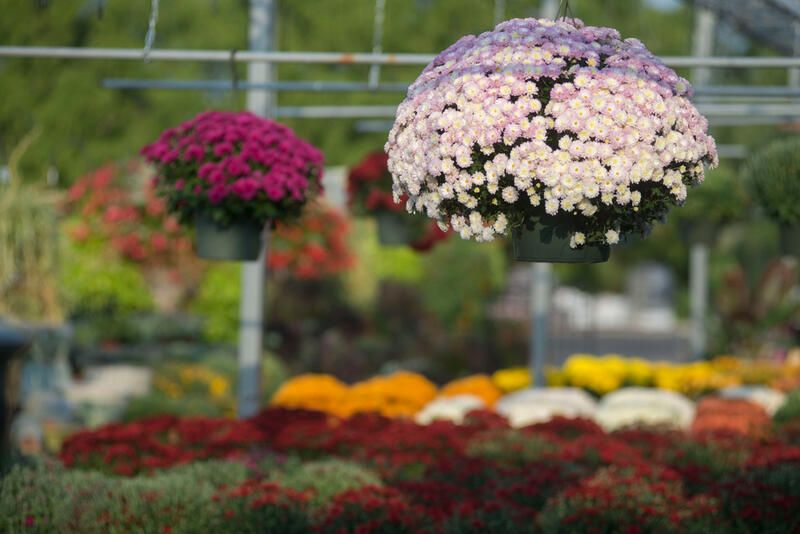
Spacing
The temptation to plant mums near one another persists. Spring mums that are smaller don't seem to fill out a garden as well. However, bear in mind that by the fall, the majority of mums that were planted correctly will grow up to 3 feet tall and wide. Mums frequently grow bigger every year, as many perennials do. Even if your flower bed initially appears a little empty after planting your mum, it will eventually fill out. Mums need to be appropriately spaced for plant health. Overcrowded plants compete for nutrients, have problems with their root systems, draw pests, and get sick. The health of your garden and the protection of your time and financial investment is increased by adhering to the plant spacing recommendations for your particular variety of chrysanthemum.
Planting from Seeds
When you plant mum seeds, you just never know what you'll receive. Although they might not be faithful to the parent plant, they will blossom the first year after planting. Growing mums from seeds are simple, but because the sort of bloom is unpredictable, it can be quite the experience. Mum seeds need a long growing season, therefore it is preferable to start them inside six to eight weeks before the final date of frost or to sow the seed in the spring in a carefully prepared bed. Keep the bed evenly moist and lightly mulch the plants. When the mothers are 6 to 8 inches (15–20 cm) in height, transplant them.
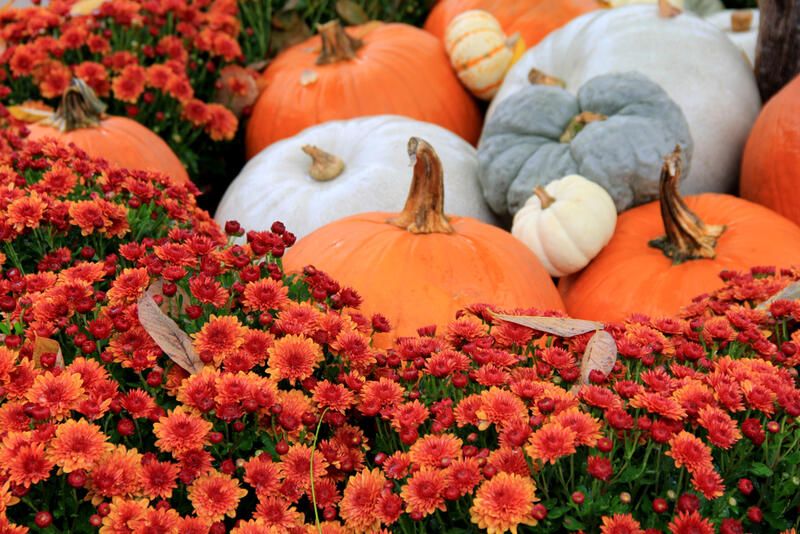
Using Cuttings to Grow Mums
Mums are started from cuttings for plants that bloom quickly. Mum plants from cuttings grow the quickest and blossom in a few months. The optimal time to take cuttings for mum propagation is in the spring or early summer.
Remove a 2 to 3-inch (5-8 cm) portion of fresh growth at the end of a stem using a sharp, sterilized knife. Insert the cutting into peat moss or perlite after removing the leaves from the bottom inch (2.5 cm) of the cutting. Always keep your cutting moist, but not soggy. Within a few weeks, it will begin to root. At that point, you should pinch off the top growth to help the young plant develop lateral growth.
Potted Mums
Choose potted mums from the nursery with buds that are just beginning to turn color, as you can see above, to receive the most bloom time. Additionally, if you're putting them in containers, you don't need to bother about using a premium potting mix or even fertilizing them because they are already prepared. You only need to slide the mom, pot and all, into position and you're ready for the season, regardless of how you plan to eat them.
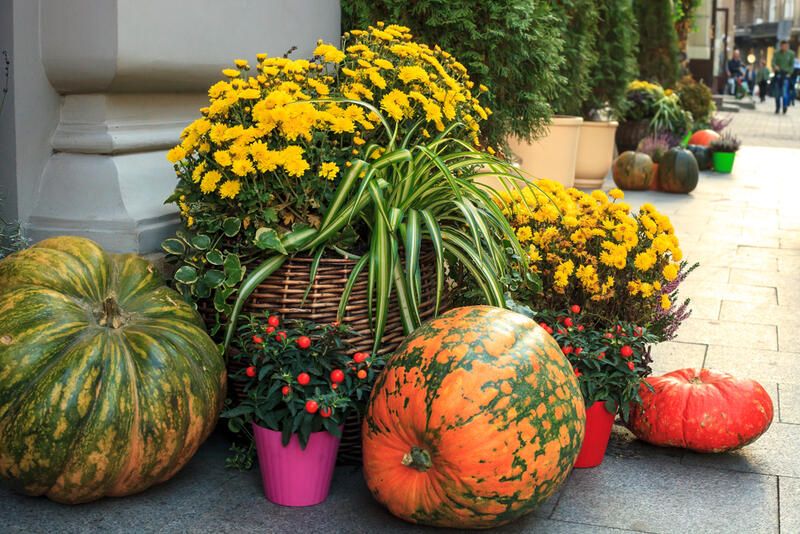
How to Care for Mums
Watering
Mums' thin root system necessitates constant watering, particularly in hot weather. In the summer, a covering of mulch will aid with water conservation and maintain cool, wet soil.
Fertilizer
Mums consume a lot of food. As soon as you notice fresh growth, start using a 10-10-10 fertilizer in granule form. Early in August, or when you see the buds forming, give them another dose. Or you can use a springtime slow-release fertilizer or try a water-soluble fertilizer. But as the buds form, give your mums a little bit more 10-10-10 if you irrigate or if it has been a rainy season. Never feed a plant beyond the middle of August; otherwise, it will want to continue growing rather than slow down to get ready for dormancy.

Pruning
Pinch the branch tips twice or three times during the growing season to promote branching and a more robust plant. Early bloomers that begin to bloom in the middle of September should be pruned as soon as mid-June. The general rule is not to pinch any closer than three months before bloom time for October bloomers, who can be pinched up until mid-July.
Dividing
Divide mums every spring for the maximum blossoms. Remove the weak, woody centers of the clump and only replant the healthy, new sprouts that are on the edge.
Pests & Diseases
They are susceptible to leaf spots, powdery mildew, and viral illnesses like mosaic or stunt. Avoid overcrowding and too-shaded areas that encourage disease habitat by keeping moisture on the leaves. Aphids, caterpillars, leafhoppers, leafminers, plant bugs, and spider mites are a few examples of pests.
Winter Survival
Mums that are not pruned to the ground will fare better during a harsh winter. Additionally, it's a good idea to cover the roots with 2 to 4 inches of straw or other loose mulch to keep them evenly cool and shielded. After the first severe frost, get mums ready for the winter. Straw or finely chopped hardwood can be used as a 4-inch mulch all around the plants. To tidy up the plant, remove only the dead blossoms and leave the branches alone. Waiting until spring to cut old stems will increase the likelihood that mums will survive.
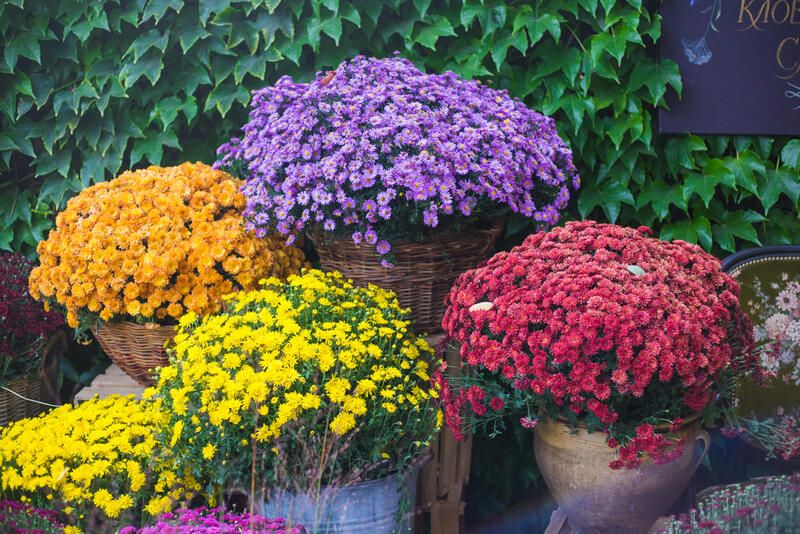
How to Use Mums in Your Garden
Garden mums are ideal for extensive plantings due to their compact, mounded habit and abundance of blossoms. Stick with just one or two colors to obtain the best impression from a distance. Another option is to create an ombre appearance by arranging a slow transition of related hues. Mum clusters can stand out more by being surrounded by a variety of landscape plants. For texture, pick ornamental grasses, berry shrubs, sedum, or any conifer.
If you want to use pumpkins and gourds in your fall décor, pick mums in shades of orange, bronze, yellow, and creamy white. Try bright pinks, lavenders, pure whites, or reds instead if you have numerous evergreen plants that give a backdrop of varied hues of green foliage. With their striking hues, mums can liven up even the most uninteresting fall landscapes.
To get the most out of your mums, choose varieties based on their bloom times. Coordinating bloom time with the duration of autumn in your locality is also beneficial. A little fall frost won't harm most garden mums but choosing the best varieties will allow you to enjoy them for as long as possible.


